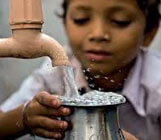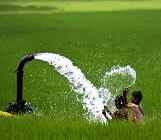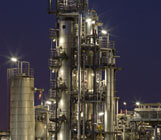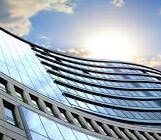Transport
Angelique addresses the transport concerns of any nation – developing or developed, people or commodities, urban or rural, industries or trading, essential or luxury, tourism or daily commutation etc. in the form of -
Public Transportation System – Intra City or Inter City
Every urban city with a sizable population needs a public transportation system for commuting people with in the city or ferrying people from neighbouring towns – and public transportation system is normally a state subject.
Angelique designs the public transport systems by construction of bus depots, repair and servicing workshops, supply of buses up to 100 people in basic or luxury segment.
Urban Mass Rapid Transport System
Mega cities, Metropolis need a mass rapid transport system in the form of mono rail or Metro - be it underground, on ground or elevated structures.
Angelique has world reputed associates with tons of experience in construction of mass rapid transport systems.
Railways
Railways are the most efficient, dependable and cost effective means of transportation of goods and people over long distances. Railways are vital for the development of country's infrastructure and growth.
Large countries need a large and cost effective means of inter-city transport system to transport people and goods over long distances but at same time at lower costs. Regarded better than road transport in terms of energy efficiency, land use, environment impact and safety it is always in forefront. Railways are generally a state subject and are run by the government.
In many countries to meet the needs of the mining industry dedicated rail networks are set up to transport ores, minerals from mining area to the sea port where cost per Km is of great importance to compete internationally.
Angelique has been promoted by experts having vast experience in engineering industry including Railways. Today the company has presence both in Indian market as well as overseas and is offering services covering entire spectrum of activities like –
- Construction of new railway lines
- Rehabilitation / conversion of existing lines
- Signaling and telecommunication networks
- Railway electrification
- Supply of locomotives, passenger coaches, freight cars
- Wrecking cranes and ancillary equipments
- Setting up production units for manufacturing rolling stock, concrete sleepers and track components
Core Expertise
- Railway signalling
- Locomotives
- Rolling Stock
- Railway track
- Repair & Maintenance Workshops
- Manufacturing of rolling stock, rail sleepers and track components
Railway Signalling
Railway signaling is a system used to control railway traffic safely, essentially to prevent trains from colliding. Being guided by fixed rails, trains are uniquely susceptible to collision; furthermore, trains cannot stop quickly, and frequently operate at speeds that do not enable them to stop within sighting distance of the driver.
Safety is the essential part of train operation. Railway signalling is essentially the most important element in train safety and its elements are.
- Block signalling
- Train detection
- Fixed signals
- Cab signalling
- Interlocking
Our integrated signalling and control solutions are at the heart of many of the world's major transport networks. From simple – single lines to heavy-haul freight, suburban and urban mass-transit railways, our advanced range of services combine to provide fully tailored solutions for solid state (electronic) interlocking, route relay interlocking, electro-mechanical and mechanical interlocking.
Locomotives
Locomotives & Multiple Units
Locomotive provides the motive power for a train. It has no payload capacity of its own, and its sole purpose is to move the train along the tracks.
Advantages of Locomotives
- Ease
- Maximum utilization of power cars
- Flexibility
- Obsolescence cycles
- Safety
- Noise
Multiple units or Rail Cars are self-propelled vehicles which provide motive power to haul an unpowered train, but are not generally considered locomotives because they have payload space or are rarely detached from their trains.
Advantages of Multiple units
- Energy efficiency
- No need to turn locomotive
- Reliability
Angelique in Railway Locomotives
We provide turnkey solutions for locomotives –
- Supply of locomotives
- Complete wheel turning capability
- Locomotive rewiring
- Engine repair (full line)
- Air brake systems repair (all types)
- Wreck damage repairs (all types)
- Component exchanges – trucks, motors, main generator and air compressor maintenance
- Safety training classes
- Locomotive leasing with maintenance
- Industrial locomotive sales
- Locomotive inspections
Rolling Stock
We offer a wide range of rolling stock maintenance solutions for entire rail transport market, including light rail transit, regional trains and locomotives trains.
We cover supply of –
- Passenger cars and freight cars
- Diesel multiple units (DMU)
- Rail bus
- Self driven maintenance & inspection vehicle
- Wrecking cranes & other equipments
- Railway gang cars & maintenance vehicles
Freight Wagons
We supply Covered wagons, Box wagons, Flat wagons, Tank wagons, Special application wagons for bottom / side discharge.
Bogies
The undercarriage for freight wagons in both Cast steel / Fabricated construction up to 25 tons axle loads.
Special Purpose Vehicles
Self propelled Rail Cars
Spares
Wheel sets, Couplers, Shock absorbers, Coil springs, Brake shoe pads, Draw bars, Freight wagon spares
Railway Track
We provide services for the procurement, installation, track repair and construction projects and services –
- Track management services
- Track and railway property development
- Track construction
- Track maintenance & repairs
- Rehabilitation & maintenance programs
- Dismantlement & salvage
- Supply of track materials
- Specialized track work supply & reconditioning
- Rail welding
- Emergency & derailment services
- Installation of switches and crossings
- Site surveys and maintenance
Rail Track Fittings
There are different ways of joining rails together to form called "Jointed Track". Lengths of rail usually 20m (60ft) long are laid and fixed to sleepers and are joined to other lengths of rails with steel plates known as fish plates.
Fish plates are usually 60cm (24") long and are bolted through each side of the rail ends with 4-6 bolts. Small gaps are deliberately left between the rails to allow for expansion of the rails in hot weather. The holes in fish plates are oval shaped to allow for expansion.
Jointed track is still used in poor countries due to lower construction cost and lack of modernization of railway systems. Because of small gaps trains make a "Clickety Clack" sound when they pass over jointed tracks. Modern railways use "Continuous Welded Rails" wherein rails are welded together using thermite reaction or flash butt welding to form single continuous rail. Such rail gives higher train speeds, smooth ride and needs less maintenance.
Since welded track has few expansion joints, they are often laid on concrete or steel sleepers, which are so heavy they hold rails firmly in place with plenty of ballast to stop movement of sleepers. The rails in expanded form are fastened to sleepers.
A flat bottomed rail is held to wooden sleeper with a base plate attached to the sleeper. Modern sleepers can be of reinforced concrete and pressed steel with rubber pads inserted between sleeper and rail. Heavy-duty elastic rail clips (Pandrol clips) are used to fasten rails to the base plate. Alternatively Rail spikes – which are large nails with overhanging head, are cheaper and simpler to install but can loosen if tie rots.
Angelique offers complete range of rail track fittings viz.
- Sleepers - Pre-stressed concrete sleepers, Pressed steel sleepers
- Base plates - in cast iron, rolled steel or fabricated steel construction
- Elastic rail clips
- Fish plates
- Malleable Iron Inserts
- Rail Spikes
Track Maintenance
Track needs frequent maintenance to remain in good order. Higher the speed and heavier the trains – higher is the frequency of maintenance. Without frequent maintenance a slow damage may occur to the laid tracks.
Common maintenance jobs include spraying ballast with weed killer to prevent weeds growing through and disrupting the ballast. This is typically done with a special weed killing train.
Rail inspections utilize non destructive methods to detect internal flaws in the rails using inspection cars and hand devices. Broken or worn out rails also need periodic replacing and is facilitated by variety of specialized machines.
- Rail Cutting machines – saw type/abrasive type
- Rail Grinding machines
- Rail Welding machines
- Rail Drilling machines
- Rail thermometers
- Track gauges
- Hydraulic rail tensors
- Rail gang cars
Repair & Maintenance Workshops
The problems encountered in manufacture and maintenance of the rolling stock is largely due to obsolescence of machinery and plant, diverse product mix and layout deficiencies.
Railway repair and maintenance workshops cater to various repairs of wagons, coaches, cranes and tower cars, and locomotives and also undertake repair and of permanent-way fixtures. It is responsible for minor maintenance and periodic overhaul of coaches and wagons.
Larger workshops are engaged in periodic overhaul of all kinds of coaches and wagons, conversion of coaches to DMUs, and repair and overhaul of components such as alternators, transformers, motors, and generator sets.
Transport
We set up integrated facilities for rehabilitation, repair and maintenance of rolling stock and bogies. It includes complete facilities for dismantling, degreasing, repair, painting, assembly, inspection and testing broadly categorized into the following -
- Flange Welding machines
- Wheel Lathe
- Wheel machining automation
- Metal forming, metal cutting and metal finishing
- Rescue devices
- Measurement tools and role of simulators.
Manufacturing of rolling stock, Rail sleepers and track compontents
Angelique undertakes setting up production units for manufacturing of rolling stock, rail sleepers and track components.
Rail sleeper manufacturing
We set up plants for manufacturing
- Pre-stressed concrete sleepers
- Pressed steel sleepers
- Wooden Sleepers
Pre-Stressed Concrete Sleepers
Sleepers are manufactured using the short stress bench method. A stress bench (a kind of steel structure which holds sleeper moulds in straight line) is about 12m long and contains 4 moulds. The stress bench moves on steel rollers.
All moulds are cleaned, greased and oiled using mould release oil. Next the mould end plates are fixed with nuts and bolts. The high tensile wire is then reeled through all 4 moulds as well as the bench end plates. The stress bench is brought to the tensioning bed and tensioning is carried out using hydraulic jacks. The stress bench is moved to the casting bed. The shuttering vibrators are fixed to each mould. The mixed concrete is poured into each mould and compacting it with help of shuttering vibrators. The stress bench is then put in steam chambers for curing for about 12 hours.
Once the required strength is achieved the stress bench is taken out of chamber, end plates are loosened thus transferring stresses to the concrete. The mould end plates are opened and high tension wires are cut. The individual sleepers are removed from moulds and put on trolleys and moved to storage shed.
This method is advantageous over long line method as it requires shorter length of shed thus reduces capital cost of shed. The steam concrete curing of sleeper manufacturing achieves early release strength of concrete.
Pressed Steel Sleepers
Sleepers in pressed steel are costly but stronger and long lasting. Complete range of machinery viz, presses, drills, forming and trimming machines comprise the plant.
Wooden Sleepers
Wooden sleepers are mostly made and used in developing countries. The complete machinery for cutting and sizing followed by creosote treatment is supplied.
Rail Track Fittings Manufacturing
We establish complete manufacturing facilities for mass production of various rail track fittings viz.
- Elastic rail clips (Pandrol Clips)
- Fish plates
- Base plates
- Rail Spikes















